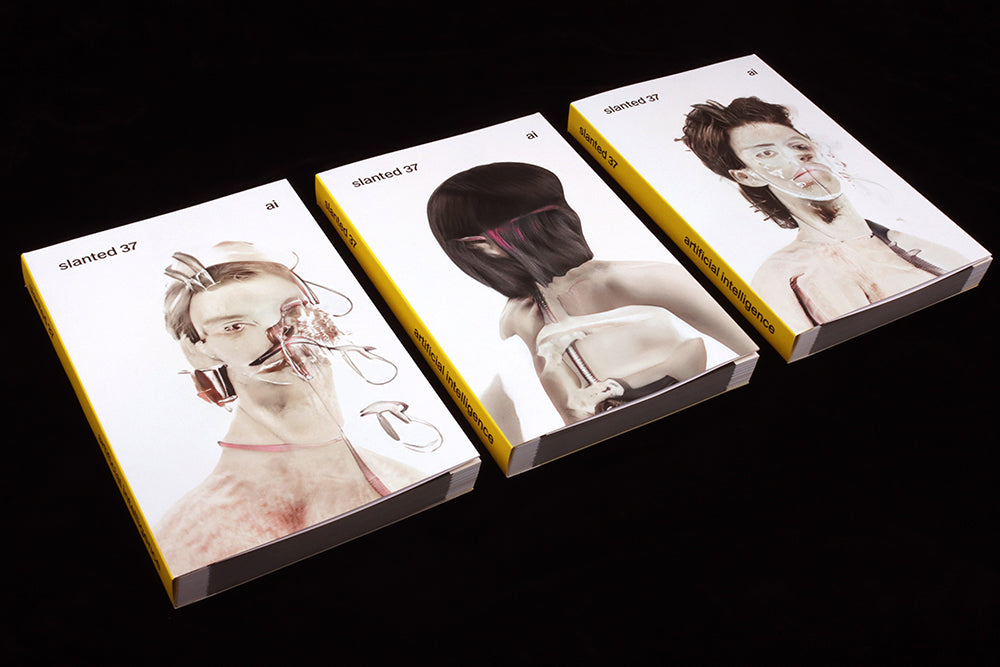
Slanted #37
For their latest issue, Slanted magazine used AI—the issue’s theme—to create a unique front cover image for each of the 5,000 print run.
The biannual magazine usually highlights the graphic design of an individual city or country each issue, the team visiting the area to meet and research local practitioners. Since the Covid lockdowns this has been harder to manage, and instead there have been a series of open call themes— Europe, Co-exist, and now AI.
AI—Artificial Intelligence—has become a catch-all for a range of techniques involving algorithms and machine learning. The issue’s 290 pages share examples of design work using or addressing the various technologies caught by the umbrella term. The work ranges from the amusing to the deadly serious, and is accompanied by a number of essays addressing both the positive and negative potential of the technology.
We’ve seen algorithm-based cover designs before—Eye’s issue 94 comes to mind. But that was a more mathematically orientated project, taking a single piece of vector type (the word ‘Eye’) and zooming in and out to create abstract patterns.

Example images from ‘Landscapes Between Eternities’ by Sylwana Zybura and Tomas C. Toth
Slanted takes advantage of machine learning, using a set of 120 images to train a computer to create additional pictures. ‘We commissioned artists Sylwana Zybura and Tomas C. Toth, known as crosslucid, to load images from their 2018 work ‘Landscapes Between Eternities’ into a Generative Adversarial Network (GAN) and generate new images,’ explained Slanted Editor-in-chief Lars Harmsen.

The original photographs were already complex, merging portraits with building and objects. They were, according to Harmsen, ‘understood as part of an evolution, adapting to new circumstances and technological advances in order to transcend gender, race, and norms.’

Collaborating with data alchemists Martino Sarolli and Emanuela Quaranta, over 5,000 new ‘faces’ were created. Each of the resulting covers is indeed unique, and unlike the original source material, often quite ugly to the point of often being only vaguely human.

‘The covers make an experimental point about applying AI to design—that there is a Frankenstein element to the technology,’ says Harmsen. ‘The AI-generated images do not, of course, show what we will look like in the near future—or even a thousand years from now—but they do echo the themes that concern people in the digital age: identity, gender, inclusivity, responsibility, ethics, self-determination...’

‘The digital world needs places that are liberated from platform and attention economy,’ Harmsen continues, ‘places beyond shallow entertainment, control and marketability.’
By highlighting such questions, Slanted continues its unique role in design coverage. There are many ‘platform’ magazines out there, often sharing submitted works with little context. Slanted maintains a critical edge—both by addressing subjects such as AI in the first place, by adding written essays that provide insight, and then notes alongside each piece of work that help contextualise it.
Editor-in-chief: Lars Harmsen
Managing editor: Julia Kahl


